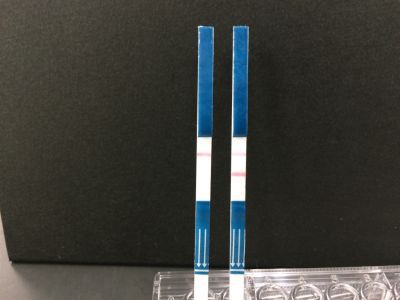Swift, simple, early Zika detection in blood

Tanaka Kikinzoku Kogyo, which operates the Tanaka Precious Metals manufacturing business, has developed what is said to be the world’s first kit able to directly detect the Zika virus (ZIKV) in blood. It is hoped that the kit will be highly effective in suppressing the spread of ZIKV infection.
ZIKV infection has been spreading since 2015, particularly in Brazil. As infection can occur not only through mosquito bites, but also through blood transfusions and sexual contact, a kit is required which can perform direct and specific detection in the early stage after infection using a fast and simple method.
There is a ZIKV detection kit that is currently commercially available, which detects the antibodies (immunoglobulin G and immunoglobulin M) that are produced in the bodies of ZIKV-infected humans. However, this immunochromatographic assay is not suitable for diagnosing Zika fever in the initial stage of infection.
In order to enable early identification of infection, Tanaka Kikinzoku Kogyo applied its antibody screening and nano-colloidal gold manufacturing technologies to develop a kit capable of direct detection of the virus itself when present in blood. The company created the kit using antibodies to non-structural protein (NS1) in ZIKV, allowing ZIKV to be detected at a concentration of 102TCID50/mL. This performance equals the sensitivity of other immunochromatographic assay-based test kits for influenza and other pathogens.

The existing method used for detecting ZIKV in blood is PCR, which requires special equipment and takes between half a day and one day to complete. With the new kit, however, the test strip only needs to be dipped into the test sample to enable ZIKV detection, enabling detection in 10 to 15 min. Unlike PCR, it does not require special equipment.
Tanaka Kikinzoku Kogyo plans to supply samples of the kit for clinical evaluation, with a view to collaborate with domestic and overseas medical manufacturers to promote the practical application of the product.
Colon cancer DNA in blood can guide chemo decisions
A simple blood test could change how doctors decide which patients with colon cancer need...
Non-invasive blood test helps rule out oesophageal cancer
Designed and developed in Australia, the PromarkerEso test is designed to offer a quick,...
Taste-based flu test enables rapid diagnosis
The diagnostic tool consists of the sensor molecule thymol and a virus-specific sugar building...





